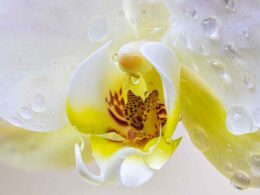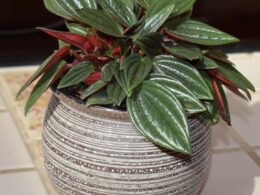Planting an Indoor Palm
Many people think that palm trees are only meant for tropical climates, but there are actually several species that can thrive indoors. If you’re looking to add a touch of the tropics to your home, here’s how to plant an indoor palm.
Choosing a Pot
First, choose a pot that is large enough to accommodate the roots of your palm tree. It’s important to use a pot with drainage holes to prevent the roots from becoming waterlogged. Place the pot in an area that receives bright, indirect light.
Soil
Once you’ve selected a pot, it’s time to prepare the soil. Palm trees need well-draining soil that is high in organic matter. You can either purchase a palm tree potting mix from your local nursery or make your own by mixing equal parts perlite, sand, and potting soil.
Water
To plant your palm tree, simply remove it from the nursery pot and place it in the center of the new pot. Gently backfill with soil, tamping down as you go to remove any air pockets. Water deeply to settle the roots into place.
Be sure to water your healthy palm regularly, fertilize monthly during the growing season, and mist the leaves occasionally to raise the humidity around your palm tree. Now it’s time for some proper tips on palm tree plant care. Read on!
Light Requirements
Anyone who has ever tried to grow an indoor palm plant knows that they can be finicky creatures. They require bright light and warm temperatures, and they often suffer if they are moved around too much. As a result, it is important to choose the right location for an indoor palm plant. A south-facing window is ideal, as it will provide the plant with plenty of light. If possible, try to avoid placing the plant in a drafty spot, as this can cause the leaves to yellow and drop off. With a little care and attention, an indoor palm plant can thrive in even the most challenging environment.
Repotting Palm Trees
Indoor palms are a popular choice for houseplants, as they add a touch of the tropics to any home. However, these plants can eventually outgrow their pots and will need to be repotted. Some gardeners choose to do this every year, while others only repot when the plant shows signs of stress.
There are a few things to consider before repotting an indoor palm.
- First, make sure the pot is only one size larger than the current pot. A pot that is too large can lead to problems with drainage and root rot.
- Second, use a well-draining potting mix that includes perlite or sand.
- Finally, water the palm thoroughly after repotting and place it in a warm, bright location.
With a little palm plant care, you will be more than happy with your healthy beauty at home.
Applying Fertilizers
Like all houseplants, indoor palm plant care experts recommend regular fertilization. If the palm is growing in nutrient-rich soil, then it likely doesn’t need any additional fertilizer. However, if the soil is poor quality or the palm is growing in a pot, then fertilizer can be beneficial. A general-purpose fertilizer that is applied every two weeks during the growing season is usually sufficient. However, it is important to read the label carefully and follow the directions, as over-fertilizing can damage the plant. If you are unsure about how often to fertilize your palm, ask a nursery or gardening center for advice.
How Much Water Does an Indoor Palm Need?
Indoor palm plants are not particularly drought-tolerant, so it is important to water them regularly. Allow the top inch of soil to dry out between watering, and then water deeply until the water runs out of the bottom of the pot. In general, palm plants prefer to be on the wetter side rather than too dry. If the leaves start to turn yellow or brown, this is usually a sign that the plant is not getting enough water. Wiping foliage with a moist cloth is also our top recommendation. If you are a perfectionist, you can leach your soil every four months.
Indoor Palm Plant Common Issues
There are a few common issues that can affect your palm. One is scale, which is a small insect that attaches to the leaves and sucks out the sap. This can cause the leaves to turn yellow and eventually die. Another problem is cold damage, which can occur when the temperature drops below 50 degrees Fahrenheit. This can cause the leaves to turn brown and die. (Bonus tip: leach the soil if the leaves get brown)
Additionally, palms can be susceptible to fungal diseases, such as fusarium wilt, which can cause the leaves to yellow and die. Finally, palms can be affected by nutritional deficiencies, such as a lack of magnesium, which can cause the leaves to turn yellow or brown. If you notice any of these problems with your palm, be sure to consult with a professional to determine the best course of action.
Best Types of Palms
While there are many types of palms to choose from, some are better suited for indoor growing than others. Here are five of the best indoor palm varieties, along with some tips on how to care for them. All of them prefer bright, indirect light and thrive in humid conditions. They all need regular watering, but the soil should be allowed to dry out somewhat between waterings.
- The areca palm is a fast-growing variety that can reach up to 6 feet in height.
- The bamboo palm is a clumping palm that typically grows to about 5 feet tall.
- The majesty palm is a tropical palm from Madagascar, it grows slowly and reach up to 20 feet in height.
- The parlor palm is a slow-growing palm, it’s very green and dense, and noramlly reaches about 12 feet in height.
- The Lady palm is also a slow-growing palm; it typically reaches about 15 feet in height.
So, which is your favorite? Let us know, and good luck with all the palm plant care tips!



















